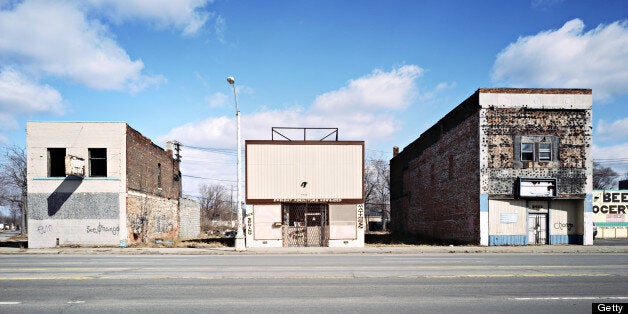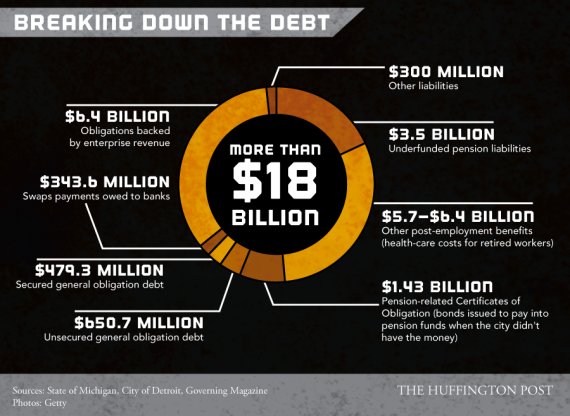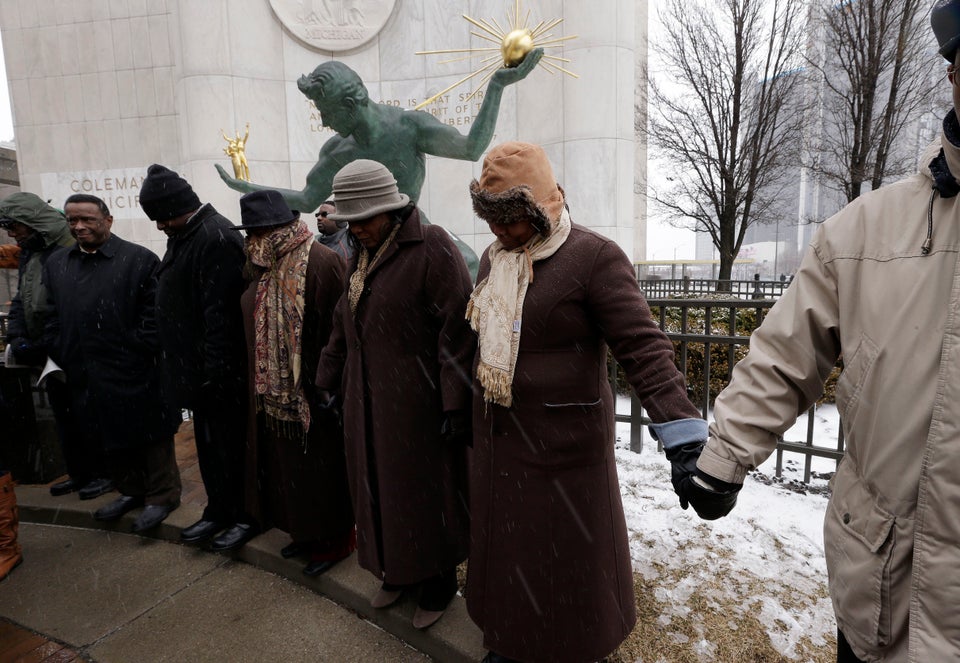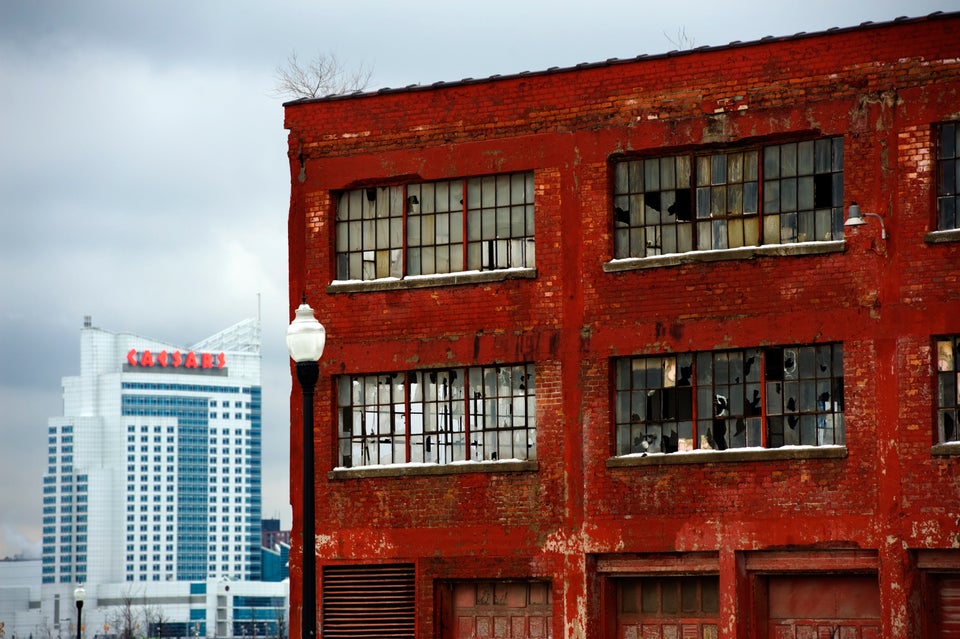
Detroit's historic bankruptcy filing on July 18 isn't just the biggest and most expensive municipal default in American history -- it's arguably the most complex to date.
This guide won't take you through a 60-year history crash course in how Detroit became essentially insolvent. But we've compiled all the crucial information needed to actually comprehend the situation Detroit is facing today. If you make it through and want more answers, you can find more HuffPost coverage of Detroit's bankruptcy here.
What is Chapter 9 Bankruptcy?
Let's begin with the basics. Chapter 9 refers to the section of the bankruptcy code that deals with municipalities that file for bankruptcy. Congress established the Municipal Bankruptcy Act in 1937, after many attempts to address cities' finances during the Great Depression. Fewer than 500 municipalities have qualified for bankruptcy under Chapter 9 since.
A municipality can mean a big city like Detroit or a small town like Central Falls, R.I., which filed for Chapter 9 protection in 2011. The law also applies to school districts, counties, taxable districts or utilities owned by a municipality.
Detroit is at least $18 billion in debt. Who is going to pay that back?
The short answer is nobody, since a bailout of any kind seems highly unlikely. If Detroit qualifies for bankruptcy protection, a federal judge will ultimately decide how much the city has to pay its creditors. The city will likely go through mediation first in an attempt to compromise with pension fund officials, retirees, bondholders, bond insurers and other creditors who were promised money. But a judge could ultimately rule that lenders to Detroit won't see much of the money they're owed. Once the city leaves bankruptcy, it will still have to abide by a budget and pay off any debts a judge forces it to pay.
Does "bankrupt" mean the city has completely run out of money?
Not exactly. Chapter 9 requires that a city prove to be "insolvent" before it can go through bankruptcy proceedings. That means the city hasn't paid debts when they were due, or cannot reasonably pay future debts. If a city is currently paying its bills, a bankruptcy judge will make a decision based on whether the city's short-term financial future is untenable. Some cities are rejected from bankruptcy proceedings for not being insolvent enough. In 1991, Bridgeport, Conn., was found not to be insolvent, although the city was in financial distress.
How many creditors does Detroit have?
Roughly 100,000. This includes banks, bondholders, and more than 20,000 retirees whose pensions could be severely reduced. Also, many major municipal bond funds have loaned money to the Motor City. You could be a Detroit creditor and not even know it!
Is Detroit still paying its bills?
Some of them. Secured creditors -- those who have collateral (physical property or a revenue stream) they can repossess if a default occurs -- will continue to be paid. Bondholders who funded Detroit's Water & Sewerage Department, which is a city asset, will continue to be paid during bankruptcy. Detroit Emergency Manager Orr already defaulted on many unsecured payments in June; many other bills the city owes will go unpaid for the time being.
Will Detroit still have police officers, firefighters and other services during bankruptcy?
Yes. The City of Detroit maintains that city services will continue uninterrupted during bankruptcy proceedings. Under the restructuring plan Orr released in June, Detroit would spend an additional $1.2 billion on city services over the next decade if a bankruptcy judge were able to negotiate with the city's creditors.
How will bankruptcy change Detroit?
Only time will tell, but Orr's restructuring plan provides some insights into the changes Detroiters might see. Click through the following slideshow for the highlights. (Story continues below.)
Who decides whether Detroit is bankrupt?
Orr, who was appointed as emergency manager after Michigan Gov. Rick Snyder found Detroit to be in a financial crisis, submitted his recommendation that the city file for bankruptcy on July 16. Snyder approved the recommendation and submitted the bankruptcy filing on July 18. But that's only the first step. U.S. Bankruptcy Judge Steven Rhodes will decide whether Detroit is eligible for bankruptcy protection. If the city's filing is approved, Detroit will spend at least 14 months in court, according to Orr, but possibly much longer.
Is Detroit's bankruptcy unconstitutional?
Bankruptcy typically introduces a "stay" of all legal action. If this were a normal bankruptcy, Detroit would not have to address any pending lawsuits that creditors have filed against it during this period. But the state of Michigan has a constitutional amendment barring any reduction of public pensions. A Circuit Court judge in Ingham County, Mich., issued an order July 19 to temporarily halt the bankruptcy proceedings because she said they violated that constitutional amendment protecting public pensions.
On Wednesday, U.S. District Judge Steven Rhodes froze state court challenges to Detroit's bankruptcy filing, allowing the city to move through the eligibility process for bankruptcy.
Read more on the constitutionality argument and Detroit's legal battle.
Will Detroit sell off its art?
This question hasn't been answered yet. Technically, all of the assets in the Detroit Institute of Arts are owned by the city, a collection worth at least $3 billion.
Read more on what bankruptcy could mean to the DIA.
What is Detroit's debt?
The City of Detroit estimates that it owes more than $18 billion in short-term and long-term debt, but even that might be a lowball figure. Detroit currently spends 38 cents of every dollar on "legacy debt," or retiree health care, pensions and other costs. That's money that can't be spent on services desperately needed by businesses and residents, like firefighters, police officers, park upkeep, garbage pickup and streetlights.
The infographic below offers a visual breakdown of Detroit's debt. Read on for definitions of what these various categories of debt actually mean.
 See the full infographic here. By Jan Diehm for The Huffington Post.
See the full infographic here. By Jan Diehm for The Huffington Post.
OPEB: Other post-employment benefits that are paid out to workers after retirement. This typically includes healthcare premiums, life insurance payments, death benefits based on years of service and deferred compensation. The skyrocketing cost of healthcare for retirees is one reason this category encompasses at least $5.7 billion of the city's estimated debt.
Underfunded pension obligations: Detroit's pension funds are underfunded by a total of $3.5 billion, according to a report from Milliman, an actuarial firm in Seattle. One reason for this: retirees currently outnumber employees paying into the City of Detroit's pension systems by more than two to one. Pension funds are unsecured debts, meaning that workers may see significant cuts to their pensions and higher out-of-pocket costs for their health care. Going forward, legacy liabilities are expected to require more and more of Detroit's net revenue to be fully funded.
Obligations backed by enterprise revenue: This is secured debt, the majority of it going to bonds issued to pay for the city's Water & Sewerage department, which serves much of Metro Detroit. A small amount generates the city's automobile parking fund. These are considered special revenue and will likely be "insulated from the city's insolvency," writes Barron's, a financial investment magazine and website. That means this debt will be paid back before money owed to pensioners and regular bondholders.
Certificates of participation: These are essentially pension obligation bonds. The City of Detroit took out a combined $1.4 billion in COPs in 2005 and 2006 to fully fund its pensions systems. These bonds are unsecured, meaning that bondholders may not have priority, or could be forced to accept partial payment from a bankruptcy judge.
Swaps payments: The City of Detroit set up trusts managed by its two pension funds to enter into swaps agreements on $1.4 billion in pension obligation certificates (see above). The COPs had variable interest rates, but swaps agreements essentially gave Detroit a (supposedly) more stable fixed interest rate. When federal interest rates were higher than the fixed interest rate, swaps holders paid the difference. But when interest rates dropped below the fixed interest rate, Detroit owed the difference between interest rates to the holder of the swaps. The swaps agreement was secured by monthly payments Detroit's three casinos give the city. When Orr decided to default on these payments in June, the $11 million monthly casino revenue went to the insurers of the swaps holders. Orr recently reached an agreement with the insurer that will let the city recoup the casino revenue.
General obligation debt: Totaling over $1 billion, these are bonds Detroit issued to pay for public works and balances of the General Fund, which is the budget for all city departments and services. Just over $650 million of these bonds are unsecured.
Other revenue: This $300 million sum is a catch-all for several different debts owed by Detroit. The city owes workers money for unpaid sick days and vacation time; worker's compensation; capital leases; and almost $64 million in judgments and lawsuits that don't include worker's comp.

